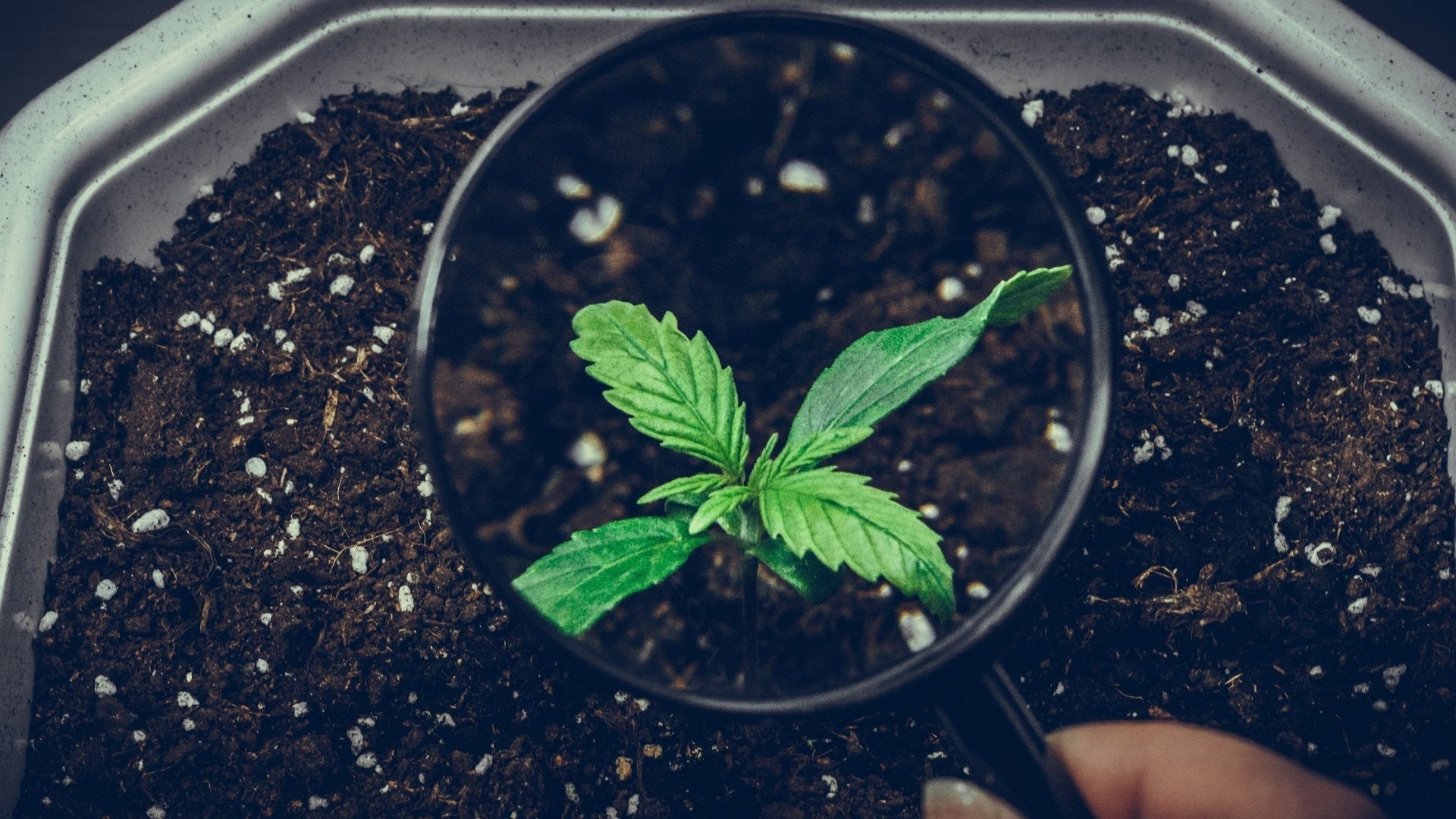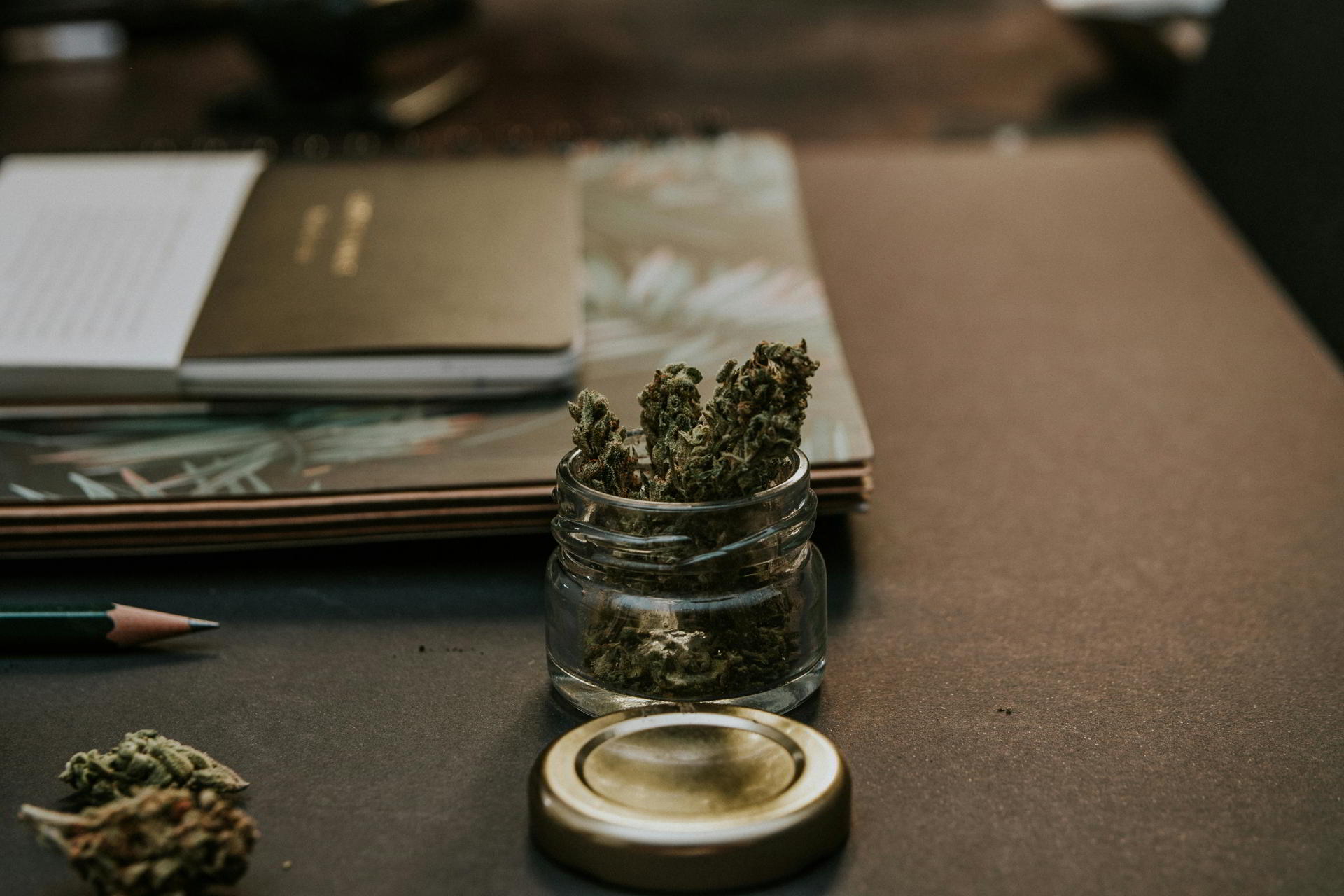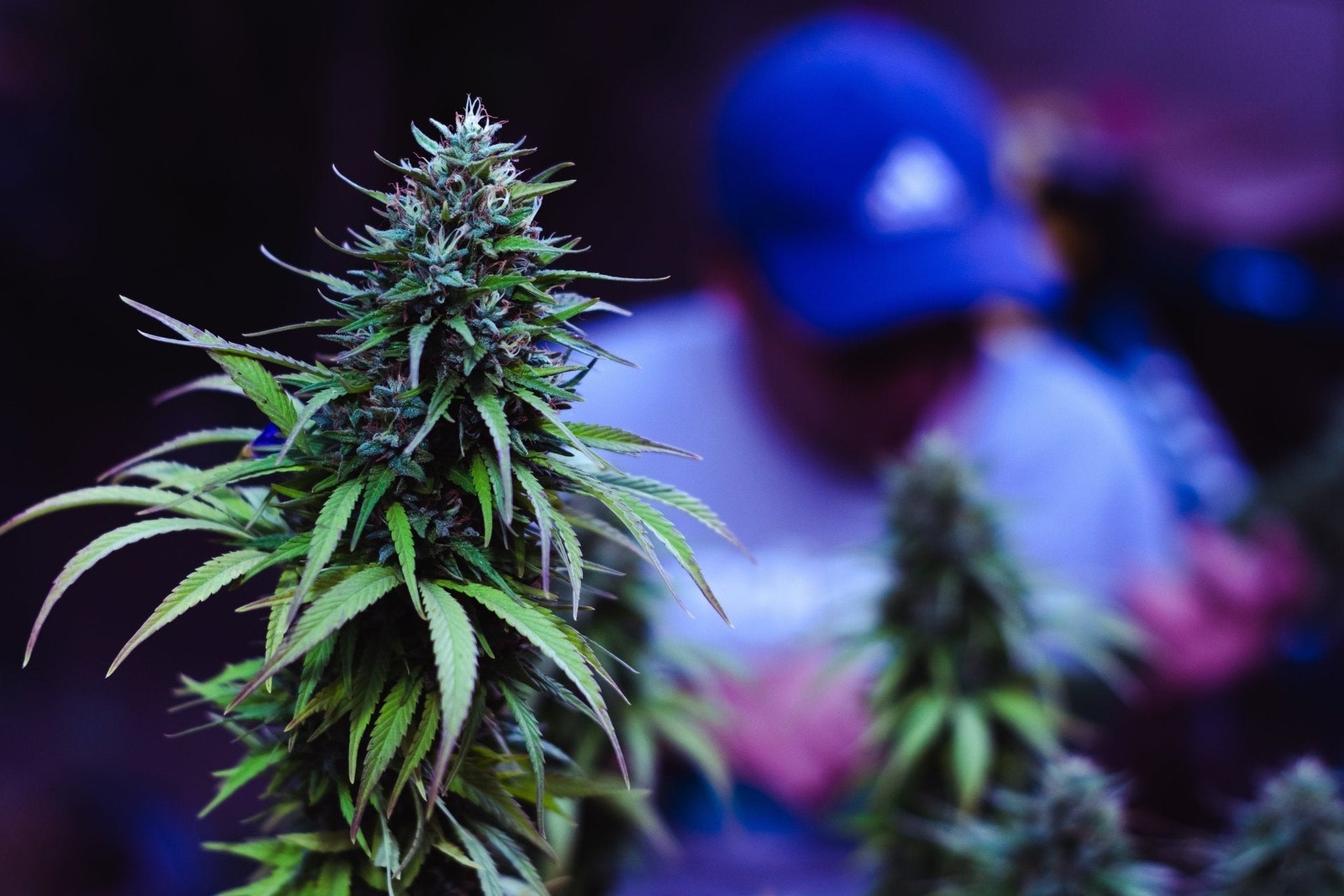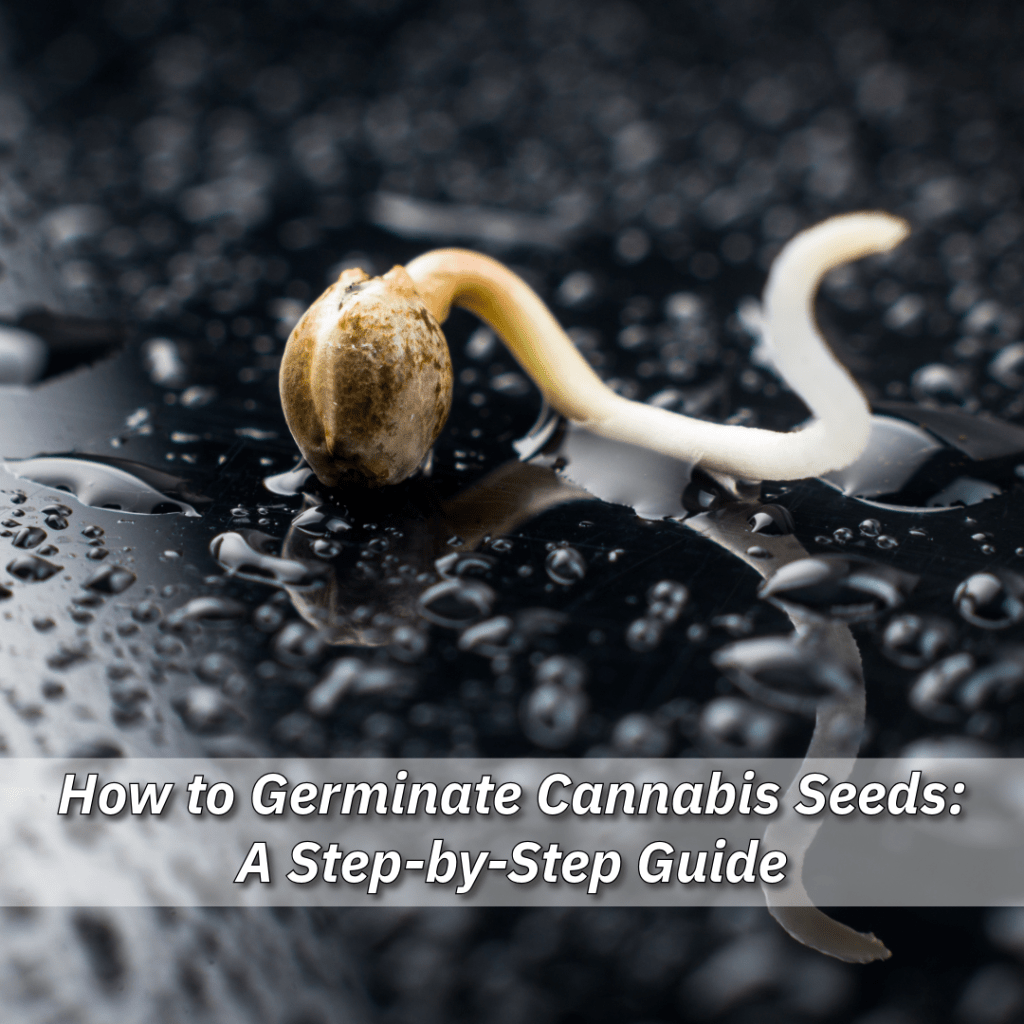
Living Soil: The Future of Sustainable Cannabis Cultivation
Sustainability meets quality: In modern cannabis cultivation, environmentally friendly methods are gaining more and more importance. Living Soil, a biologically active soil full of microorganisms, provides the perfect solution for sustainable growing while ensuring top-tier plant development. This natural ecosystem mimics the complex soil structures found in undisturbed forests, creating an optimal foundation for robust growth and premium-quality cannabis.
What is Living Soil?

Living Soil is an organic, self-sustaining soil system teeming with beneficial microbes, fungi, and bacteria that support plant health. Unlike conventional soil, which relies on synthetic fertilizers, Living Soil nurtures plants through natural nutrient cycles, reducing the need for external inputs.
Key Features of Living Soil:
✔ Natural Soil Ecosystem: Mimics forest-like environments, promoting soil biodiversity.
✔ Nutrient Cycling: Microorganisms break down organic matter into bioavailable nutrients for plants.
✔ Enhanced Terpene & Cannabinoid Profiles: Organic soil fosters better flavor, aroma, and potency.
💡 Tip: Living Soil improves over time and can be reused across multiple grow cycles, reducing costs and waste.
The Benefits of Living Soil in Cannabis Cultivation

✔ Sustainability: Living Soil minimizes the reliance on synthetic fertilizers and contributes to long-term soil health.
✔ Superior Plant Quality: Research suggests that organically grown cannabis produces richer terpene profiles and higher cannabinoid concentrations.
✔ Improved Resistance: The diverse microbial community in Living Soil enhances plant immunity, reducing the risk of pests and diseases.
💡 Tip: By using Living Soil, growers can significantly reduce their carbon footprint and contribute to regenerative agriculture.
Challenges of Living Soil
✔ Initial Cost & Setup Time: Establishing a Living Soil system may require a higher upfront investment in organic amendments, cover crops, and compost.
✔ Slow Nutrient Response: Unlike synthetic fertilizers, which act instantly, Living Soil requires time to break down nutrients through microbial processes.
✔ Compost Tea & Soil Amendments: Regular feeding with compost teas and natural soil boosters ensures continued fertility and microbial diversity.
💡 Tip: Although Living Soil requires patience, the long-term benefits, including cost savings and improved plant health, outweigh the initial challenges.
How Living Soil Works in Cannabis Cultivation
Living Soil operates through a dynamic symbiotic relationship between plants and soil microbes, commonly referred to as the rhizosphere. This interaction improves nutrient uptake and strengthens plant resilience.
Key Components of Living Soil:
✔ Mycorrhizal Fungi: These fungi form beneficial connections with plant roots, increasing nutrient absorption.
✔ Bacteria & Microbes: Decompose organic material, releasing essential nutrients such as nitrogen and phosphorus.
✔ Worm Castings & Compost: Boost microbial activity and provide slow-releasing nutrients.
💡 Tip: To maintain a thriving Living Soil environment, avoid chemical pesticides and synthetic fertilizers that could disrupt microbial life.
FAQ: Common Questions About Living Soil
How does Living Soil differ from regular soil? Living Soil is a self-sustaining ecosystem rich in beneficial microbes, whereas conventional soil relies on synthetic fertilizers for plant nutrition.
Can Living Soil be reused for multiple grows? Yes! With proper care and amendments like compost tea, Living Soil can be reused indefinitely, improving with each cycle.
What amendments can I add to Living Soil? Popular amendments include worm castings, bat guano, kelp meal, alfalfa meal, and biochar to maintain microbial diversity and nutrient availability.
Does Living Soil require pH adjustments? In most cases, no. The microbial life in Living Soil naturally balances pH, reducing the need for artificial pH control.
Conclusion: Why Living Soil is the Future of Cannabis Cultivation
Living Soil is not just a growing technique; it's a philosophy of sustainability and quality. By nurturing a natural soil ecosystem, growers can cultivate cannabis with higher terpene content, improved cannabinoid profiles, and a significantly reduced environmental impact.
🌱 Start your Living Soil journey today! Explore our premium organic seeds at TerpHunters and take your grow to the next level.
Sustainability meets quality: In modern cannabis cultivation, environmentally friendly methods are gaining more and more importance. Living Soil, a biologically active soil full of microorganisms, provides the perfect solution for sustainable growing while ensuring top-tier plant development. This natural ecosystem mimics the complex soil structures found in undisturbed forests, creating an optimal foundation for robust growth and premium-quality cannabis.
What is Living Soil?

Living Soil is an organic, self-sustaining soil system teeming with beneficial microbes, fungi, and bacteria that support plant health. Unlike conventional soil, which relies on synthetic fertilizers, Living Soil nurtures plants through natural nutrient cycles, reducing the need for external inputs.
Key Features of Living Soil:
✔ Natural Soil Ecosystem: Mimics forest-like environments, promoting soil biodiversity.
✔ Nutrient Cycling: Microorganisms break down organic matter into bioavailable nutrients for plants.
✔ Enhanced Terpene & Cannabinoid Profiles: Organic soil fosters better flavor, aroma, and potency.
💡 Tip: Living Soil improves over time and can be reused across multiple grow cycles, reducing costs and waste.
The Benefits of Living Soil in Cannabis Cultivation

✔ Sustainability: Living Soil minimizes the reliance on synthetic fertilizers and contributes to long-term soil health.
✔ Superior Plant Quality: Research suggests that organically grown cannabis produces richer terpene profiles and higher cannabinoid concentrations.
✔ Improved Resistance: The diverse microbial community in Living Soil enhances plant immunity, reducing the risk of pests and diseases.
💡 Tip: By using Living Soil, growers can significantly reduce their carbon footprint and contribute to regenerative agriculture.
Challenges of Living Soil
✔ Initial Cost & Setup Time: Establishing a Living Soil system may require a higher upfront investment in organic amendments, cover crops, and compost.
✔ Slow Nutrient Response: Unlike synthetic fertilizers, which act instantly, Living Soil requires time to break down nutrients through microbial processes.
✔ Compost Tea & Soil Amendments: Regular feeding with compost teas and natural soil boosters ensures continued fertility and microbial diversity.
💡 Tip: Although Living Soil requires patience, the long-term benefits, including cost savings and improved plant health, outweigh the initial challenges.
How Living Soil Works in Cannabis Cultivation
Living Soil operates through a dynamic symbiotic relationship between plants and soil microbes, commonly referred to as the rhizosphere. This interaction improves nutrient uptake and strengthens plant resilience.
Key Components of Living Soil:
✔ Mycorrhizal Fungi: These fungi form beneficial connections with plant roots, increasing nutrient absorption.
✔ Bacteria & Microbes: Decompose organic material, releasing essential nutrients such as nitrogen and phosphorus.
✔ Worm Castings & Compost: Boost microbial activity and provide slow-releasing nutrients.
💡 Tip: To maintain a thriving Living Soil environment, avoid chemical pesticides and synthetic fertilizers that could disrupt microbial life.
FAQ: Common Questions About Living Soil
How does Living Soil differ from regular soil? Living Soil is a self-sustaining ecosystem rich in beneficial microbes, whereas conventional soil relies on synthetic fertilizers for plant nutrition.
Can Living Soil be reused for multiple grows? Yes! With proper care and amendments like compost tea, Living Soil can be reused indefinitely, improving with each cycle.
What amendments can I add to Living Soil? Popular amendments include worm castings, bat guano, kelp meal, alfalfa meal, and biochar to maintain microbial diversity and nutrient availability.
Does Living Soil require pH adjustments? In most cases, no. The microbial life in Living Soil naturally balances pH, reducing the need for artificial pH control.
Conclusion: Why Living Soil is the Future of Cannabis Cultivation
Living Soil is not just a growing technique; it's a philosophy of sustainability and quality. By nurturing a natural soil ecosystem, growers can cultivate cannabis with higher terpene content, improved cannabinoid profiles, and a significantly reduced environmental impact.
🌱 Start your Living Soil journey today! Explore our premium organic seeds at TerpHunters and take your grow to the next level.




